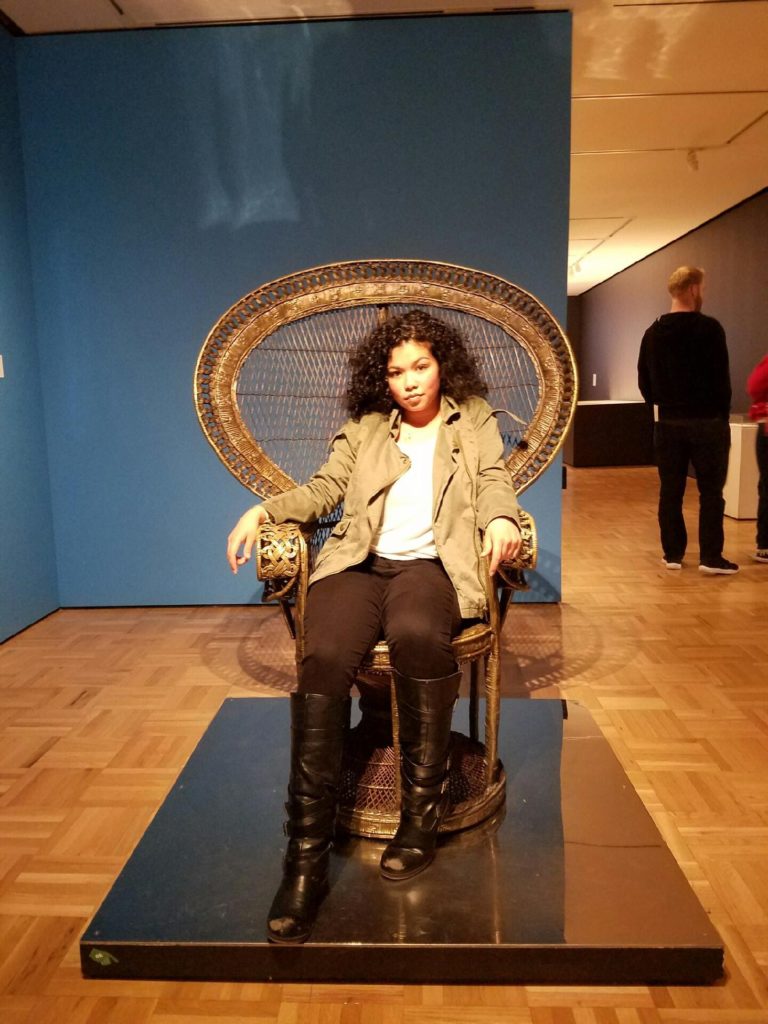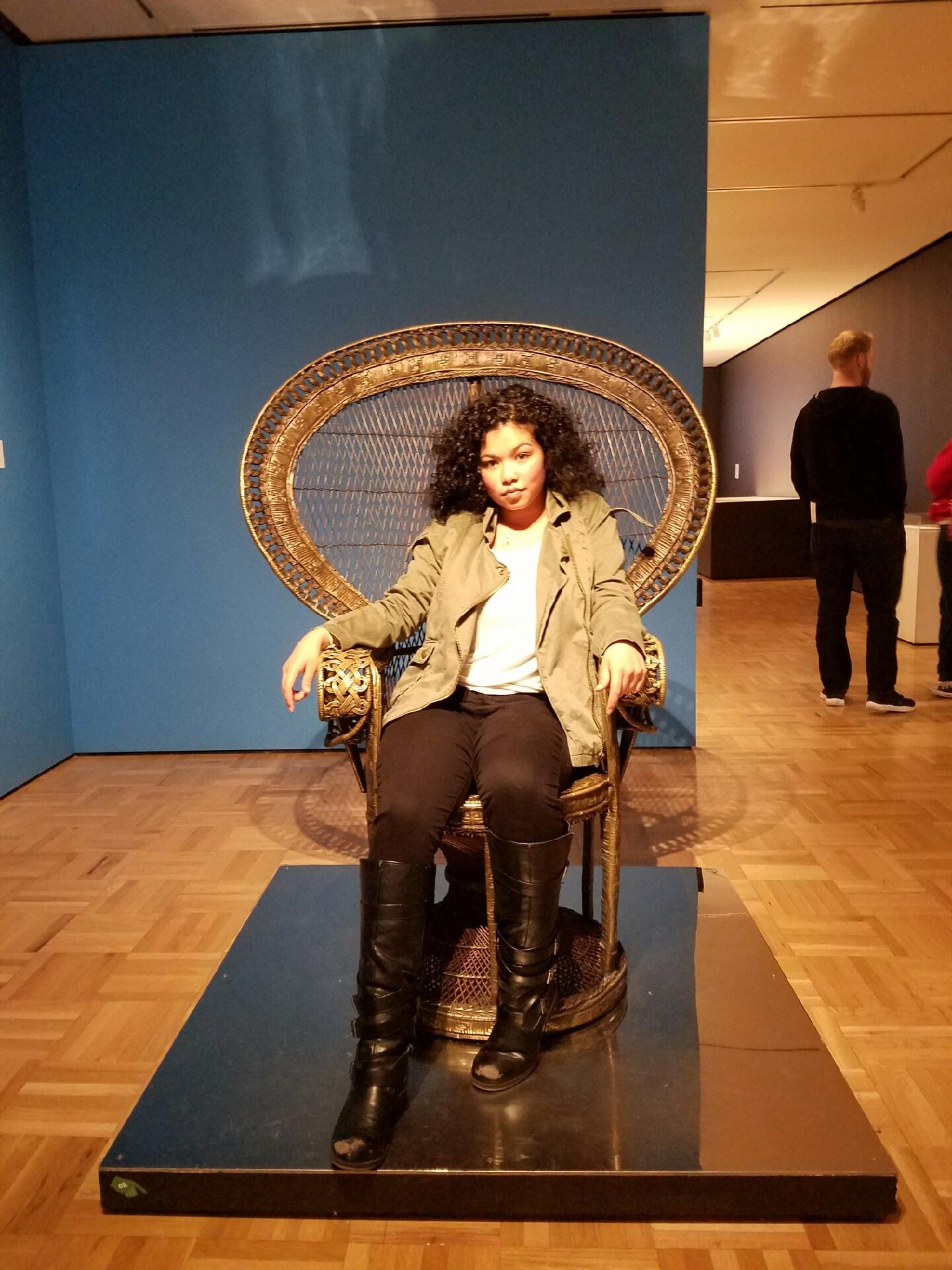
photo by Julian Holmes
The Black Panther Party was founded in 1966 by Huey P Newton and Bobby Seale. Intended to serve oppressed people and fight injustice, it soon turned into a movement that made a lasting impact on America and our lives today.
The Oakland Museum of California is currently hosting an exhibit on the Black Panthers called “All Power to the People”, which highlights the history and accomplishments of the Black Panthers and commemorates the party’s 50th anniversary.
On Sunday, January 22, I visited the exhibit. Walking into the Oakland Museum of California, I felt a mix of both fear and excitement. I was afraid of all the horrible things I was about to learn, afraid of the privilege I would be reminded of, and afraid of witnessing the tragedy my ancestors faced. I was afraid to see things that would too closely reflect our present day, afraid of the progress we have failed to make, and afraid that I wouldn’t want to see what I was about to see.
I was excited to learn. Excited to live my history and feel connected to the subject. Being Chinese, Japanese, Indian, and African-American, it’s not every day that the history of even my one of my ancestors gets told, and I could not wait for the opportunity to learn about a community I could connect to, a community in which I could see part of myself.
As I started to go through the exhibit, the first artifact I saw was a large wicker chair—or rather, throne. A picture depicted Huey P. Lewis sitting in this wicker peacock chair in 1967. Museum goers were invited to sit in the chair. Sitting in it myself, I felt powerful – I could see why Huey liked it – and I appreciated the museum’s effort to start the exhibit with a thoughtful, empowering invitation. This feeling of empowerment prepared me for what I was about to experience.
Next, the exhibit introduced me to maps of redlining and redevelopment, along with old architectural pieces from destroyed homes. These maps originated with the U.S. government sponsored Homeowners Loan Corporation, established in 1933 as part of the New Deal. The intention was specifically to codify inequality — ghettoize and curtail the opportunities of non-white citizens of the United States. This map was hard for me to see and study.
Moving on through the exhibit, I noticed little things, distracting myself from the horrible reality of what I was witnessing. I read something about the Vietnam War and how it was impacting Oakland. I tried not to think about where I would have been in 1966.
I tried to take everything earnestly. I tried to feel nothing — I didn’t want to be hurt; I was there to learn. This was about the history, about learning and absorbing, not about my emotions. Then suddenly all of the ideas I had about not feeling anything, about learning and being there to absorb rather than hurt came crashing down with a bang. In a glass case embedded in the wall lay a simple white robe. It had a small, red and white symbol on the chest, and a cone-shaped white hat lying on top of it. A KKK robe. I was stopped in my tracks. Never in my life had I seen a tangible manifestation of this group. I didn’t know what to think, I forgot how to read, I stood there and stared, paralyzed. I stood there and let myself feel. I let myself feel the anger, the hate, the confusion, the pain, and the sadness—the deep, deep sadness.
I wondered if I was right to feel anger and hate, because isn’t that what the KKK thrived on — hate and ignorance? Should I be allowing myself to feel such things? Was that right? I was so confused by the emotions I felt, by the loyalty I felt to these black people who were hurt, we people who make up one quarter of my background. I wasn’t sure what I should be feeling, or for whom I should be feeling such things.
I didn’t know why such an emotional reaction was warranted, but at the same time I knew exactly why it was. In that instant, I mourned for the lives lost, for the ignorance spread, for the souls hurt. I mourned for the dead. I mourned for the living. I mourned for the people who had to live through such hatred, the people who were made to feel less than, who were de-personified based on the color of their skin. I mourned for America then and now. I mourned for the many, many victims of prejudice and ignorance.
Finally, I tore myself away from my confrontation with the robe. As I continued through the exhibit, I learned about the Black Panther Party’s protest of May 2, 1967. To force news coverage and to get attention for their manifesto and their cause, the Black Panthers took a drastic measure. After alerting the press to assure news coverage, they showed up on May 2, 1967 at the California State Capitol with guns and entered the chamber. The Panthers’ May 2 protest was peaceful. Yes, they carried guns, pointed upward at the ceilings — carrying guns at the time was legal. But the protest was peaceful.
The Panthers’ protest was followed by swift anti-Panther reaction by Governor Reagan and the Republican dominated chambers of the California legislature. The Mulford Bill—which came to be known as the Panther’s Bill— was introduced and passed. The bill, which was supported by Republicans and the NRA, made it illegal for “good guys” to carry guns.
In response to the protests of the 1960s, I wondered about the state of politics today. Some kind of statement needs to be made against the rising tide of social injustice. Peaceful protests like that of the Black Panthers have proven themselves time and again as effective methods of change. Do we have to power to fight for the change we want to see in the world, peacefully?
What came next surprised me. It was an explanation of the community service that the Black Panthers participated in, founded, and supported: free breakfasts for children, free health clinics, free transportation and escorts for seniors, community schools. I learned that the Black Panthers not only dedicated their lives to the fight for equality, but to service as well. The Panther’s themselves worked to peacefully transform Oakland’s neighborhoods and look after those in need, they cared for people; they rode around in cars to police Oakland’s neighborhoods.
I started to feel hopeful. And then I saw it— Jarrell Wadsworth’s 1971 painting “Revolutionary.” I saw this piece of art, in every sense of the word. I was drawn in by its voice, its insight. I’m not sure why, but it just spoke to me, and I fell in love. It fought everything that oppression meant with paint. It so strongly resisted racism, so vehemently inspired change, so stubbornly refused to minimize its truth for the world. It was a piece that made me believe that change is possible, that life has meaning, that we shall overcome. Using words and colors, images and intention, it spoke to something deep within my core. I thought, this is something I would spend money on, something I would appreciate every day, something I want in my life.






